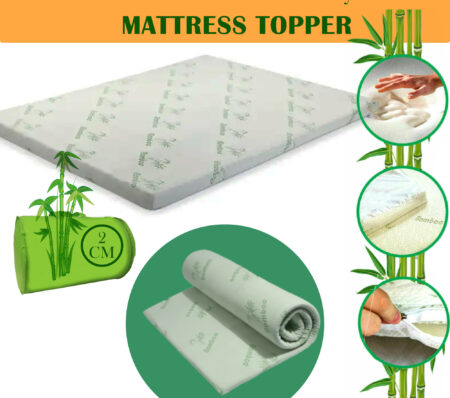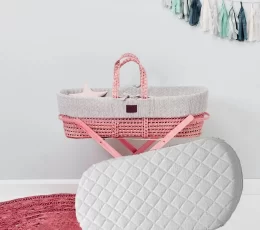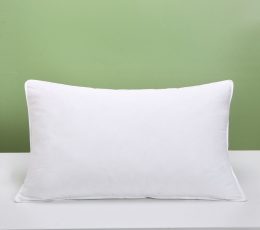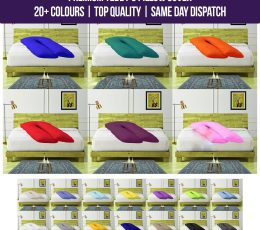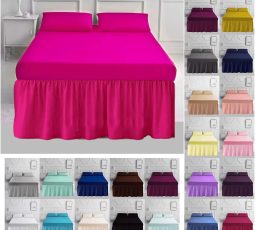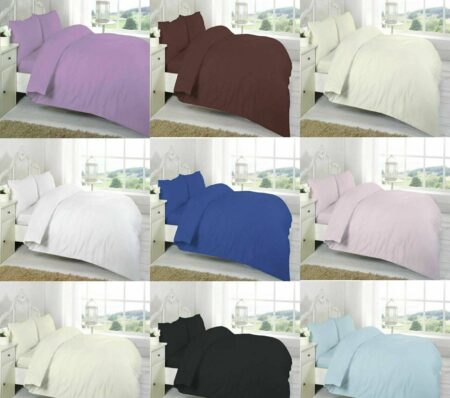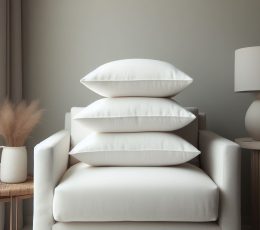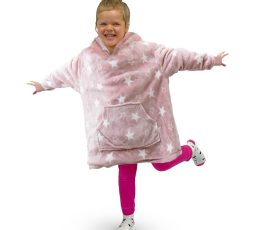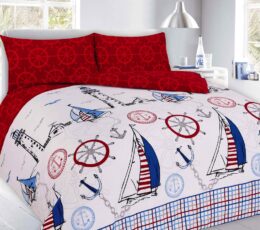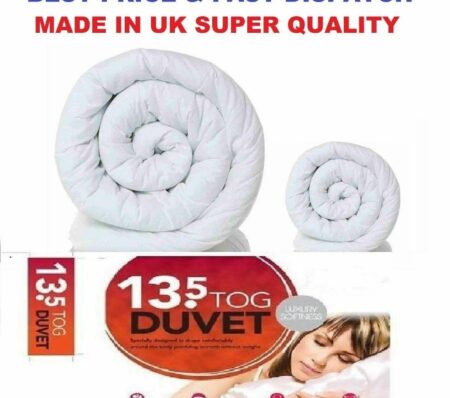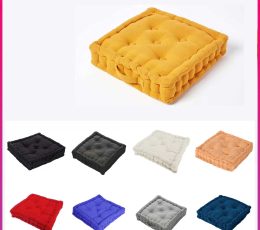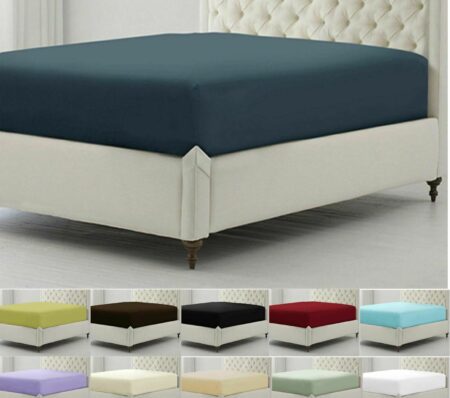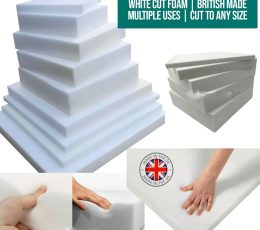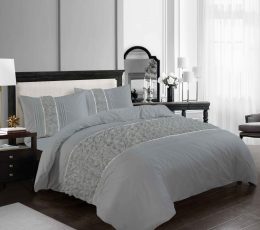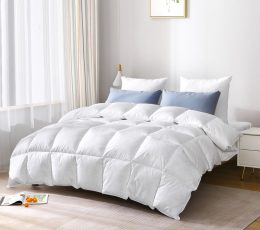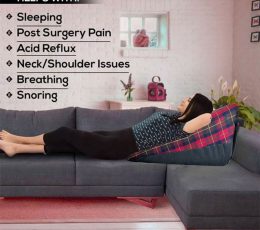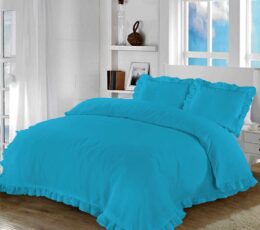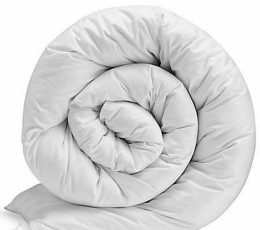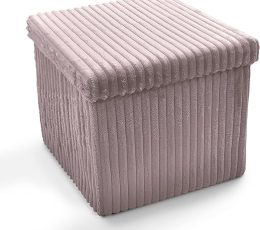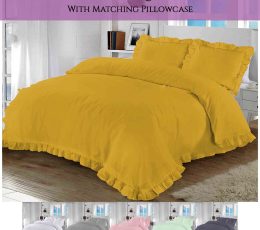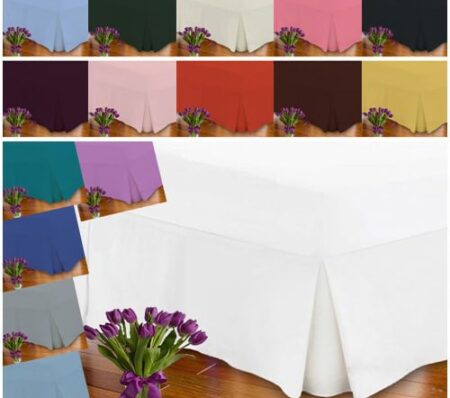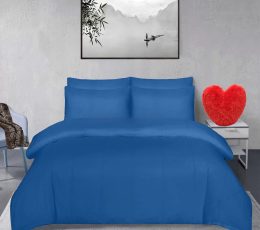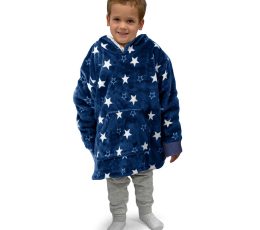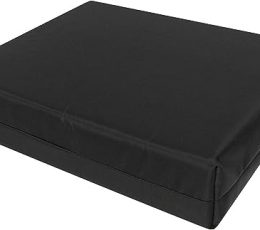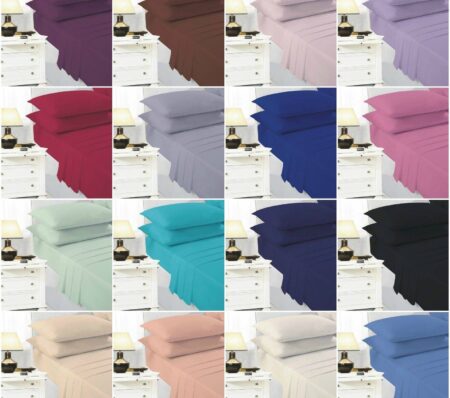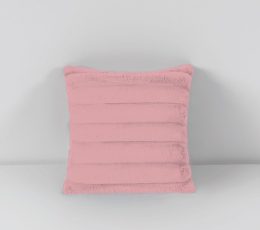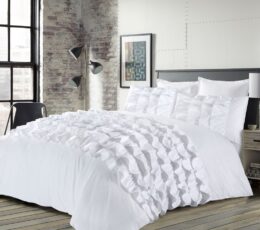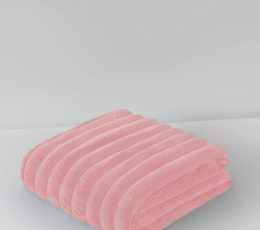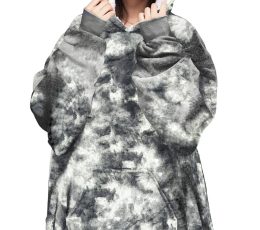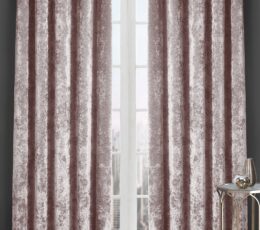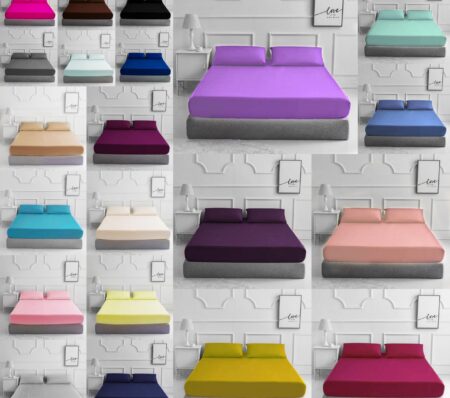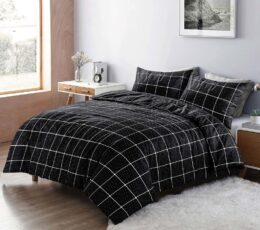When it comes to the comfort and safety of your baby during sleep, every parent wants to ensure they make the right choices. One common question in this quest is when can your baby pillow is essential for a good night sleep? In this comprehensive guide, we’ll delve into this question and provide essential insights to help you navigate the world of baby pillow and we mainly request you to follow the pillow guide to cover the basics about pillows.
When Can a Baby Have a Pillow?
One of the many milestones parents eagerly anticipate is introducing their baby to a pillow for sleep. However, determining the right time to introduce a pillow is crucial for ensuring the safety and comfort of your little one. According to pediatric experts, the general recommendation is to wait until the child is at least one year old before introducing a pillow into their sleep environment.
This guideline is primarily aimed at reducing the hike of Sudden Infant Death Syndrome (SIDS) and many other sleep-related hazards. During the first year of life, babies should sleep on a firm and a flat surface without pillows or soft bedding to minimize the risk of suffocation or overheating.
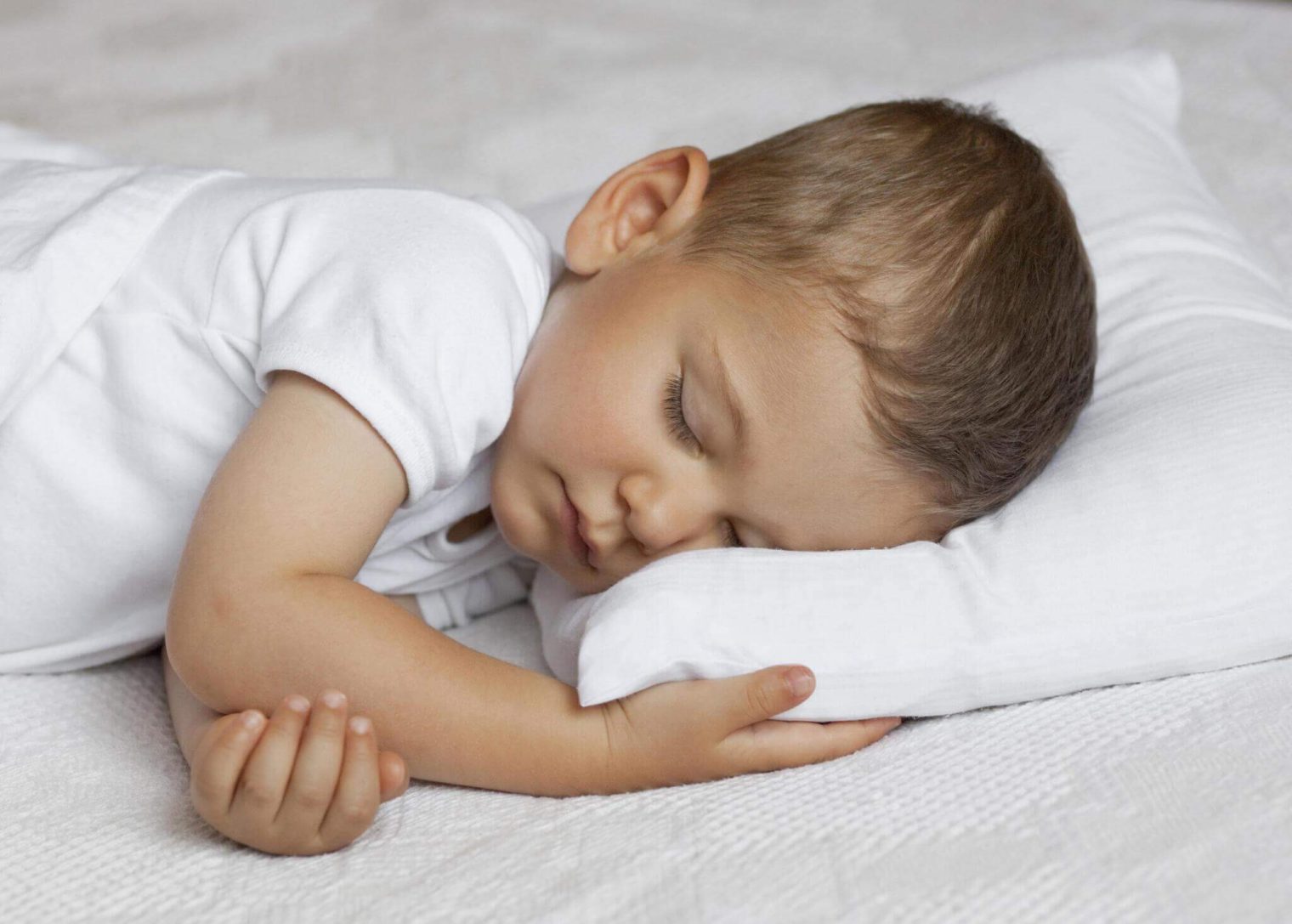
Signs Your Baby Needs PIllow:
While the recommended age for introducing a pillow is around one year old, every child develops at their own pace, and some toddlers may show signs of readiness for a pillow earlier than others. Here are some indicators that your little one might be ready for a pillow:
- Improved Neck Control: A key sign of readiness for a pillow is when your baby demonstrates improved neck control. They should be able to turn their head from side to side without difficulty, indicating that their neck muscles are strong enough to support using a pillow. So make sure you consider how to use the v shaped pillow for neck support.
- Change in Sleeping Habits: If your toddler is consistently restless during sleep or appears uncomfortable, introducing a pillow might provide them with added comfort and support. Restlessness or frequent waking indicates that your child needs extra cushioning during sleep.
- Transitioning to a Toddler Bed: Many parents introduce a pillow when their child transitions from a crib to a toddler bed. The change in sleeping environment may warrant using a pillow to help your toddler adjust and feel more comfortable in their new bed.
- Interest in Pillows: Some toddlers may show interest in pillows by reaching for them or attempting to use them during sleep. If your child demonstrates curiosity about pillows, it could be a sign that they are ready to transition from sleeping without one to sleeping with a pillow.
- Consultation with Pediatrician: Before introducing a pillow to your baby’s sleep routine, it’s essential to consult with your pediatrician. They can provide you with the personalized guidance based on your child’s needs and development. Your pediatrician can also offer valuable advice on when and how to safely introduce a pillow into your toddler’s sleep environment.

Types of Baby Pillows:
Once you’ve determined that your toddler is ready for a pillow, choosing the right one is essential to ensure their safety and comfort. Several types of baby pillow are available on the market, each designed to meet different needs and preferences. Here are some common types of baby pillow:
- Flat Head Syndrome Prevention Pillows: These help prevent or correct flat head syndrome (plagiocephaly) in infants. They are typically made from memory foam or other supportive materials and feature a contoured shape that helps distribute pressure evenly on the baby’s skull.
- Toddler-sized Pillows are smaller and flatter than standard adult pillows, making them suitable for young children. These pillows provide gentle support for the head and neck without elevating the head too much, reducing the risk of suffocation or discomfort.
- Organic and Hypoallergenic Pillows: Organic and hypoallergenic pillows or the bolster pillow are an excellent choice for parents concerned about allergies or sensitive skin. These pillows are mainly made up from natural materials like as organic cotton or bamboo and are free from the potentially harmful chemicals and irritants.
- Travel Pillows are compact and portable, making them ideal for on-the-go use. They are often designed to provide neck support during car rides, flights, or stroller outings, ensuring your baby stays comfortable while away from home.
- Wedge Pillows: Baby Wedge pillow are angled pillows placed under the mattress to slightly elevate the baby’s head or torso. They often help alleviate symptoms of reflux or congestion and promote better breathing and digestion during sleep.
Pillow Use According to Age
Pillows play a significant role in ensuring comfort and proper spinal alignment during sleep. However, the appropriate age for introducing a pillow varies depending on the child’s developmental stage. Here’s a breakdown of pillow use according to age:
Infants (0-12 months):
During the first year of life, pediatric experts recommend that infants sleep on a very firm, flat surface without pillows or soft bedding. This recommendation is aimed at reducing the risk of SIDS and other sleep-related hazards. Infants have limited neck control and are at risk of suffocation if their face becomes pressed against a pillow or soft bedding. Therefore, creating a safe sleep environment is essential by using a firm mattress and avoiding pillows until the child is older.
Toddlers (1-3 years):
Around the age of one, toddlers may show signs of readiness for a pillow. As they develop better neck control and become more mobile, they may benefit from a pillow’s added comfort and support during sleep. However, choosing a pillow specifically designed for toddlers is crucial to ensure the proper spinal alignment and reduce the risk of suffocation. Toddler-sized pillows are smaller and flatter than standard adult pillows, providing with just the right amount of support for their developing neck and spine.
Preschoolers (3-5 years):
Preschool-aged children can continue using toddler-sized pillows or transition to slightly larger pillows as they grow. Children may have more specific preferences for pillow firmness or materials at this stage. Some children may prefer memory foam pillows for added comfort, while others may prefer hypoallergenic for sensitive skin. Choosing a pillow that meets the child’s needs and preferences is essential while ensuring safety and proper spinal alignment during sleep.
School-Aged Children (5-12 years):
As children grow older, they may transition to standard-sized pillows similar to those used by adults. However, it’s essential to continue prioritizing proper spinal alignment and comfort when choosing a pillow. Look for pillows with adjustable loft or firmness levels to accommodate changing sleep preferences and ensure a comfortable night’s rest. Additionally, consider factors such as breathability, washability, and durability when selecting a pillow for school-aged children.
Teenagers (12+ years):
Teenagers can typically use standard-sized pillows similar to those used by adults. At this stage, they may have more specific preferences for pillow materials, such as memory foam or latex, based on personal comfort preferences. Encourage teenagers to choose pillows that provide adequate support for their neck and spine while ensuring breathability and comfort during sleep. Regularly check the condition of the pillow and replace it as needed to maintain optimal support and hygiene.

Features to Look For Toddler Pillow
Choosing the pillow for your toddler is essential for ensuring their safety, comfort, and proper spinal alignment during sleep. Here are some features to look for before buying a pillow for your toddler:
- Size and Thickness: Opt for a toddler-sized pillow to adequately support your child’s head and neck. The pillow should be appropriately sized to prevent suffocation risks and promote proper spinal alignment.
- Firmness: Choose a pillow with medium firmness that provides sufficient support for your toddler’s head and neck without being too hard or too soft. The pillow should retain its shape and not collapse under the weight of the child’s head.
- Hypoallergenic Materials: Select a pillow made from hypoallergenic materials to minimizes the risk of many allergic reactions or respiratory issues. Look for pillows made from natural fibers such as organic cotton or bamboo, which are breathable and gentle on sensitive skin.
- Washability: Choose a pillow with a removable, machine-washable cover for easy cleaning and maintenance. Toddlers are prone to spills, accidents, and drool during sleep, so keeping their pillows clean and hygienic is essential. If you are new in the field of wash your pillow make sure you follow the complete guidelines to get the better results.
- Breathability: Ensure that the pillow has good airflow to prevent overheating and promote a comfortable sleep environment. Look for pillows with breathable materials or ventilation channels to allow air to circulate freely.
- Durability: Select a pillow made from high-quality materials that are durable and long-lasting. Toddlers may be rough on their pillows, so choosing one that can withstand daily use and maintain its shape and support over time is essential. Make sure you know about how often should you change your pillow to get the most hygienic sleep.
- Safety Certification: Check if the pillow has been tested and been certified for safety by reputable organizations like as the Consumer Product Safety Commission or CertiPUR. This ensures the pillow meets stringent safety standards and does not contain any harmful chemicals or toxins.
- Comfort Features: Consider additional comfort features such as contoured designs, cooling gel inserts, or adjustable loft options based on your toddler’s preferences and sleep habits. Choose a pillow that provides optimal comfort while supporting your child’s head and neck during sleep.
FAQs
When can I introduce a pillow to my baby’s sleep routine?
It’s generally suggested to wait until your baby is at least one year old before introducing a pillow. However, every child develops at their own pace, so it’s essential to look for signs of readiness, such as improved neck control, before introducing a pillow.
What features should I look for before buying a pillow for my toddler?
Before buying a pillow for your toddler, consider factors such as size and thickness, firmness, hypoallergenic materials, washability, breathability, durability, safety certification, and comfort features. Choosing a pillow that provides proper support, comfort, and safety is crucial for ensuring your child a restful night’s sleep.
How do I know if a pillow is safe for my baby?
Look for pillows that meet safety standards set by reputable organizations like the Consumer Product Safety Commission or CertiPUR. Ensure the pillow is free from harmful chemicals, has a firm and flat surface, and is the right size for your baby to prevent suffocation risks.
Can I use regular adult pillows for my baby?
It’s not recommended to use regular adult pillows for babies or toddlers, as they may pose suffocation risks due to their size and loft. Instead, opt for pillows specifically designed for infants or toddlers, which are smaller, flatter, and provide adequate support for their developing neck and spine.
How do I clean and maintain my baby’s pillow?
Most baby pillow come with removable, machine-washable covers for easy cleaning. Follow the instructions for washing & drying the pillow to maintain cleanliness and hygiene. Regularly inspect the pillow for wear and tear, and replace it if it becomes flattened or loses shape.
Are there any risks associated with using a pillow for my baby?
While pillows can provide added comfort and support during sleep, there are some risks to be aware of, including suffocation, allergic reactions, and overheating. Choosing a pillow that meets safety standards and following safe sleeping practices to minimize these risks is essential.
Introducing a pillow into your toddler’s sleep routine is a significant milestone that should be approached with care and consideration for their safety and comfort. By waiting until your child shows the signs of readiness and selecting the right pillow for their needs, you can help ensure that they enjoy a restful night’s sleep while minimizing the risk of accidents or injuries.


